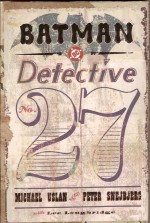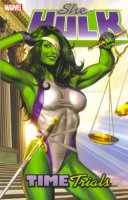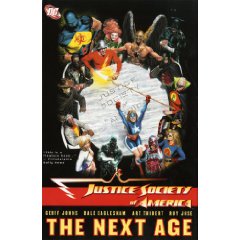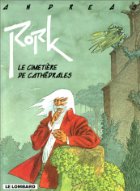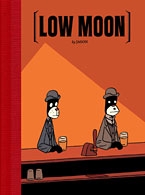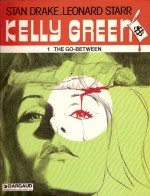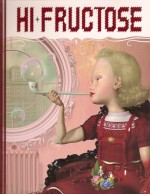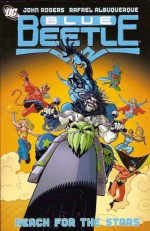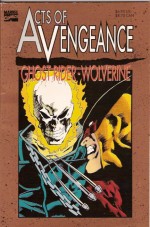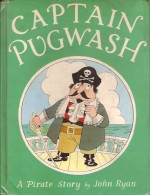
By John Ryan (Puffin)
ISBN: 978-1-84507-919-2
John Ryan was an artist and storyteller who straddled three distinct disciplines of graphic narrative, with equal qualitative if not financial success.
The son of a diplomat, Ryan was born in Edinburgh on March 4th 1921, served in Burma and India and after attending the Regent Street Polytechnic (1946-48) took up a post as assistant Art Master at Harrow School from 1948 to 1955. It was during this time that he began contributing strips to Fulton Press publications, in the distaff alternative Girl but especially the legendary Eagle.
On April 14th 1950 Britain’s grey, post-war gloom was partially lifted with the first issue of a new comic that literally shone with light and colour. Avid children were soon understandably enraptured with the gloss and dazzle of Dan Dare, Pilot of the Future, a charismatic star-turn venerated to this day. The Eagle was a tabloid-sized paper with full colour inserts alternating with text and a range of various other comic features. “Tabloid” is a big page and one can get a lot of material onto each one. Deep within, on the bottom third of a monochrome page was an eight panel strip entitled Captain Pugwash – The story of a Bad Buccaneer and the many Sticky Ends which nearly befell him. Ryan’s quirky, spiky style also lent itself to the numerous spot illustrations required throughout the comic every week.
Pugwash, his harridan of a wife and the useless, lazy crew of the Black Pig ran until issue 19 when the feature disappeared. This was no real hardship as Ryan had been writing and illustrating ‘Harris Tweed – Extra Special Agent’ a full page (tabloid, remember, an average of twenty panels a page, per week!) from The Eagle #16. Tweed ran for three years as a full page until 1953 when it dropped to a half page strip and was repositioned as a purely comedic venture.
In 1956 the indefatigable old sea-dog (I mean old Horatio Pugwash but it could so easily be Ryan: an unceasing story-peddler with a big family, he also found time to be the head cartoonist for the Catholic Herald for forty years) made the jump to children’s picture books.
A Pirate Story (first published by Bodley Head before switching to the children’s publishing specialist Puffin) was the first of a huge run of children’s books on a number of different subjects. Pugwash himself starred in 21 tomes; there were a dozen books based on the animated series Ark Stories, as well as Sir Prancelot and a number of other creations. Ryan worked whenever he wanted to in the comic world and eventually the books and the strips began to cross-fertilise.
The first Pugwash is very traditional in format with blocks of text and single illustrations that illuminate a particular moment. But by the publication of Pugwash the Smuggler (1982) entire sequences are lavishly painted comic strips, with as many as eight panels per page, and including word balloons. A fitting circularity to his careers and a nice treat for us old-fashioned comic drones.
When A Pirate Story was released in 1957 the BBC pounced on the property, commissioning Ryan to produce five-minute episodes (86 in all from 1957 to 1968, which were reformatted in full colour and rebroadcast in 1976). In the budding 1950s arena of animated television cartoons Ryan developed a new system for producing cheap, high quality animations to a tight deadline. He began with Pugwash, keeping the adventure milieu, but replaced the shrewish wife with a tried-and-true boy assistant. Tom the Cabin Boy is the only capable member of a crew which included such visual archetypes as Willy, Baranabas and Master Mate (fat, thin and tall – all dim) instantly affirming to the rapt, young audience that grown-ups are fools and kids do, in fact, rule.
Ryan also drew a weekly Pugwash strip in the Radio Times for eight years, before going on to produce a number of other animated series including Mary, Mungo and Midge, The Friendly Giant and Sir Prancelot as well as adaptations of some of his many children’s books. In 1997 an all new CGI-based Pugwash animated TV series began.
That first story sets the scene with a delightful clown’s romp as the so-very-motley crew of the Black Pig sailed in search of buried treasure, only to fall into a cunning trap set by the truly nasty Cut-Throat Jake. Luckily Tom, the Cabin Boy, was as smart as his shipmates and Captain were not…
John Ryan returned to pirate life in the 1980s, drawing three new Pugwash storybooks: The Secret of the San Fiasco, The Battle of Bunkum Bay and The Quest for the Golden Handshake as well as a thematic prequel in Admiral Fatso Fitzpugwash, in which it is revealed that the not-so-salty seadog had a medieval ancestor who became First Sea Lord, despite being terrified of water…
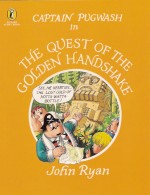
The most recent edition of A Pirate Story (2008 from Frances Lincoln Children’s Books) came with a free audio CD, and just in case I’ve tempted you beyond endurance here’s a full list (I think) of the good(?) Captain’s exploits: Captain Pugwash: A Pirate Story (1957), Pugwash Aloft (1960), Pugwash and the Ghost Ship (1962), Pugwash in the Pacific (1963), Pugwash and the Sea Monster (1976), Captain Pugwash and the Ruby (1976), Captain Pugwash and the Treasure Chest (1976), Captain Pugwash and the New Ship (1976), Captain Pugwash and the Elephant (1976), The Captain Pugwash Cartoon Book (1977), Pugwash and the Buried Treasure (1980), Pugwash the Smuggler (1982), Captain Pugwash and the Fancy Dress Party (1982), Captain Pugwash and the Mutiny (1982), Pugwash and the Wreckers (1984), Pugwash and the Midnight Feast (1984), The Battle of Bunkum Bay (1985), The Quest of the Golden Handshake (1985), The Secret of the San Fiasco (1985), Captain Pugwash and the Pigwig (1991) and Captain Pugwash and the Huge Reward (1991)
We don’t have that many multi-discipline successes in comics, so why don’t you go and find out why we should celebrate one who did it all, did it first and did it well? Your kids will thank you and if you’ve any life left in your old and weary adult fan’s soul, you will too…
© 1957, 2009 John Ryan and presumably the Estate of John Ryan. All rights reserved.

